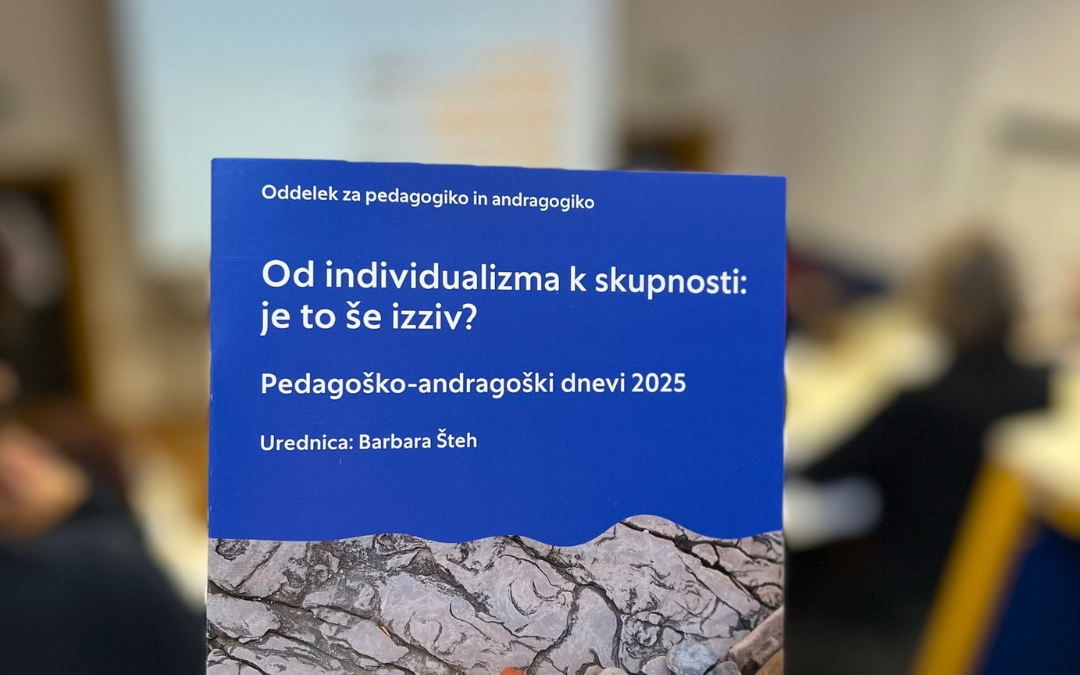These questions certainly require deep reflection, mutual discussions and, above all, time. In today’s world, time is often in short supply. As a result, we complete our tasks in isolation, and when we do work in groups, we divide the tasks among ourselves as it is the quickest way. If we lack time, we turn to generative artificial intelligence to speed up our work. The pace of life is accelerating, and we are expected to be efficient at every step. Unfortunately, this way of working leads to exhaustion. Moreover, we overlook the synergistic effects of teamwork, where the collective effort yields greater results than the sum of individual contributions.
Creating space for connection and collaborative learning
During discussions at this year’s Pedagogical-Andragogical Days, we agreed that we need more opportunities for joint learning, coexistence and shared decision-making. We must focus more on developing interpersonal relationships and genuine connections. Educators at all levels, from schools to ALE, in classrooms, intergenerational communities and even virtual environments, create these opportunities.
The lecture by Dr Klara Skubic Ermenc and Dr Jana Kalin focused on the role of class teachers in fostering classroom communities. This aspect is defined differently in professional and legal documents across various countries, yet the classroom community remains a key space for learning. At the same time, the quality of relationships within the teaching staff, engagement with parents and connections with the wider local community are also important. According to the presented research findings, class teachers feel differently equipped to develop the right atmosphere, foster quality interpersonal relationships and actively involve pupils in planning and implementing class community activities. Notably, almost a fifth of them do not feel competent in this area.
The teacher as a central member of the community
As Dr Marko Radovan pointed out, the role of the teacher extends to virtual learning communities. In online environments, their responsibilities include leading and supporting learning and fostering a sense of connection among learners. A well-established learning community and interaction among members are fundamental to the learning process. Learners gain more when they feel a sense of belonging and have opportunities for information exchange. However, teaching methods used by the teacher to achieve learning goals are more critical than the environment – whether virtual or physical – in achieving learning goals.
Intergenerational interaction
When engaging in mutual learning, we must not forget the knowledge gained through interactions with different generations. In the past, knowledge was transferred informally within extended families through daily interactions. Today, as we learn and live in more age-homogeneous groups, we promote such learning through structured educational initiatives. In these cases, learning often occurs as a by-product of other activities, making it largely informal. Dr Meta Furlan has discussed its effects and highlighted the significance of public spaces for intergenerational learning. In interactions with different generations, we frequently acquire implicit knowledge, which prompts the question: how can we raise awareness of this knowledge? Perhaps the first step is to reflect on where we learn and what we have learned in various communities in everyday life.
Changing the world or ourselves?
Everyone thinks of changing the world, but no one thinks of changing himself.
Dr Barbara Šteh recalled these words of the great thinker in the final discussion of the conference. She emphasised that leading by example and action is the most effective way to drive change. To paraphrase a question we explored in a workshop led by Metka Demšar Goljevšček: “What can I do today to make community-based learning our reality and future again?” Let this be an invitation for all to reflect.
Meta Brečić-Ločičnik (meta.brecic-locicnik@acs.si), SIAE



